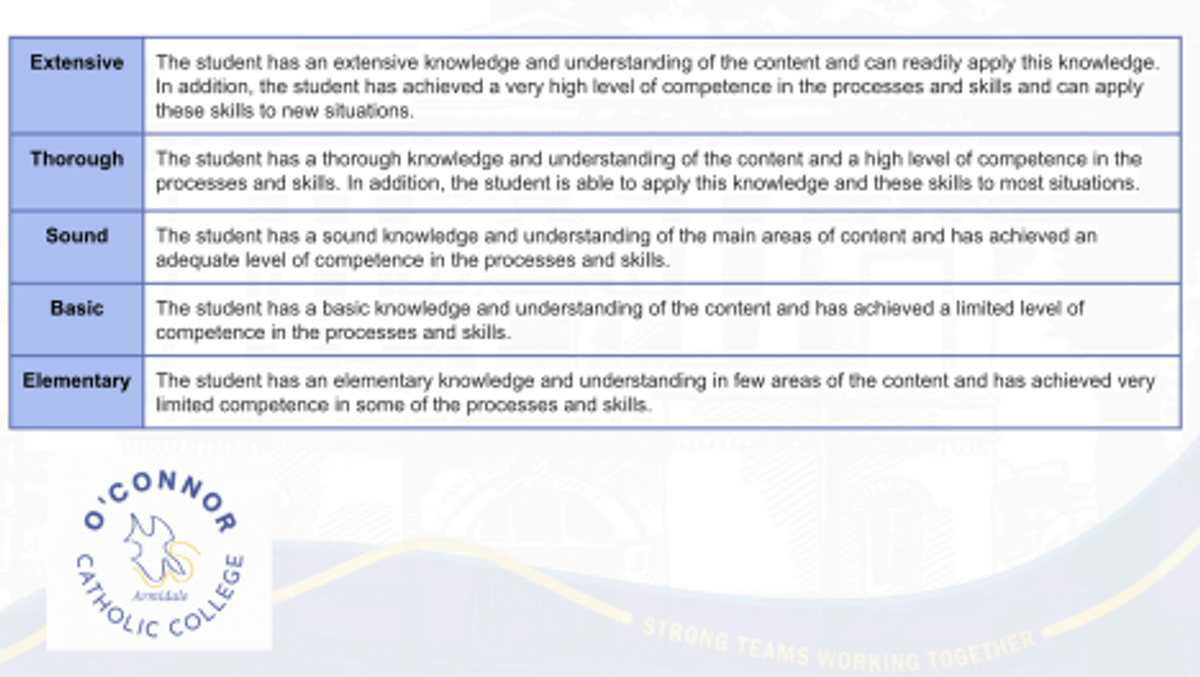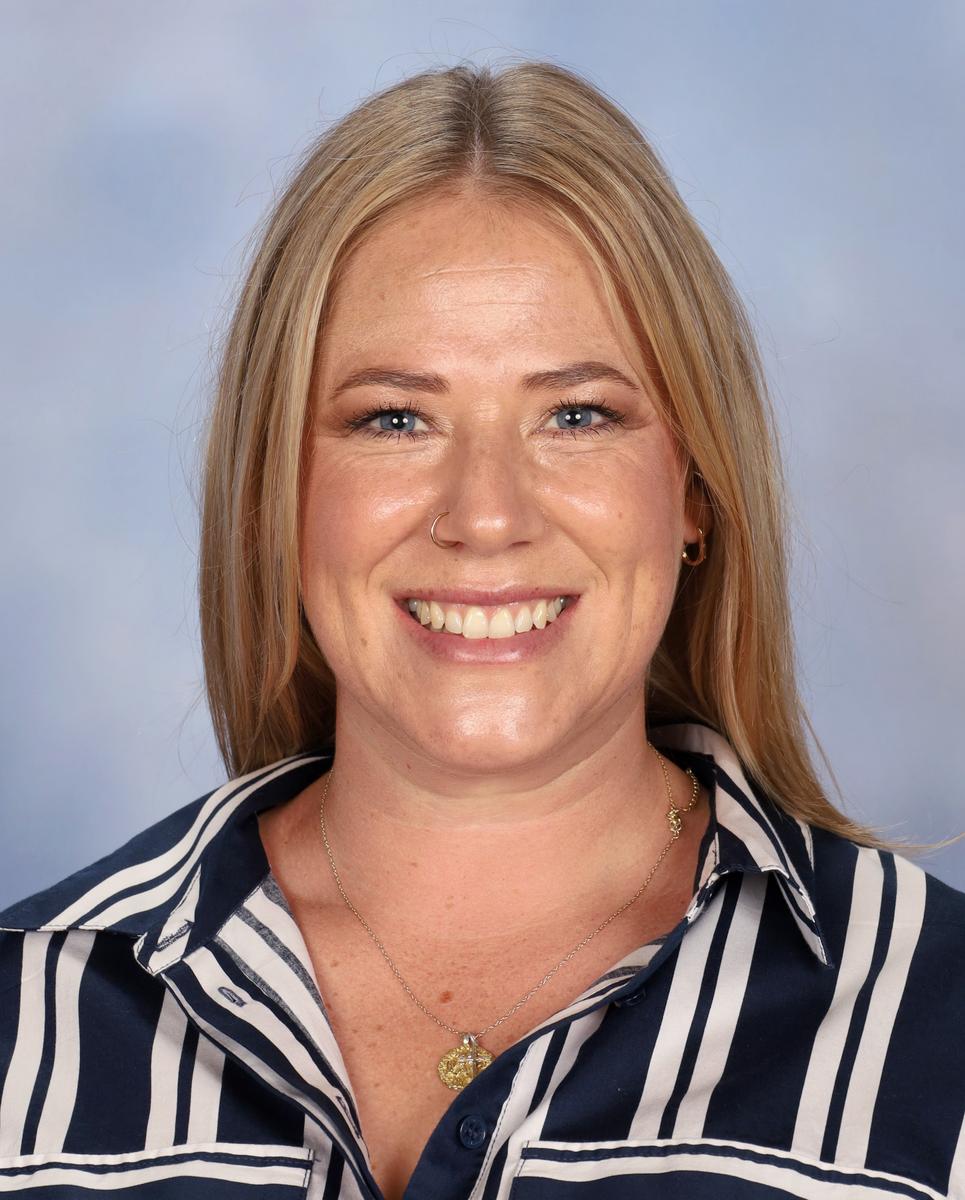Leader of Pedagogy
Ms Natalie Mellowship

Leader of Pedagogy
Ms Natalie Mellowship
Understanding Student Achievement: Deconstructing Years 7-9 NESA Descriptors
As Leader of Pedagogy, I believe that it’s important that as a College community, we have a clear understanding of how student achievement is assessed and communicated. At O'Connor Catholic College, we regularly engage with the NSW Education Standards Authority (NESA) descriptors to evaluate student learning and progress. These descriptors provide a comprehensive framework for understanding what students know, understand, and can do.
These descriptors are vital tools that help guide our teaching and learning. They allow teachers to accurately assess student work, provide targeted feedback, and plan future learning experiences. By understanding these levels, we can all work together to support our students in striving for continuous improvement and achieving their full potential.
The NESA descriptors categorise student work into five key levels: Extensive, Thorough, Sound, Basic, and Elementary.


At OCC, we are currently in the process of updating our 7-9 Learning tasks to reflect these descriptors. We encourage you to look at Compass to see these changes in your child’s learning tasks for each Key Learning Area.
Beyond the Letter Grade: What the Descriptors Really Mean
It's important to remember that these descriptors have been carefully created to provide a holistic picture of a student's learning journey. When you see a grade on your child's report, it's a reflection of their achievement against these descriptors across a range of learning tasks.
For students, these descriptors help them understand where they are in their learning. If they receive a 'Sound' for a particular area, it means they've grasped the core concepts. To move to 'Thorough' or 'Extensive', they'll need to demonstrate a deeper understanding, apply their knowledge in more complex situations, and refine their skills. Use the feedback on their learning tasks in conjunction with these descriptors to pinpoint areas for growth.
For parents, the NESA descriptors provide a common language for discussing your child's progress with their teachers. Instead of just focusing on a letter grade, ask how your child's performance aligns with the "Thorough" or "Extensive" descriptors. This allows for more meaningful conversations about their strengths and areas where they might need additional support or challenge. It also helps you understand the expectations for each stage of learning and how your child is tracking towards them.
By understanding the depth and breadth of the NESA descriptors, we can collectively foster a culture of continuous learning and growth at O'Connor Catholic College, ensuring every student is supported in achieving their personal best.


Ms Natalie Mellowship
Leader of Pedagogy